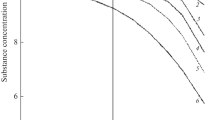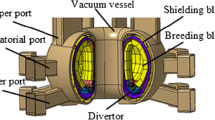Abstract
The gas permeability of solid material is one of the important factors affecting pressure change properties of seal products. In this article, the pressure change analysis based on gas permeation and material outgassing principle of the seal cavity for satellite in-orbit is carried out. Through establishing the pressure change model of the seal cavity, analyzing the gas permeation of the encapsulating material, testing the material outgassing characteristics of the transformer body, this paper obtained the pressure change trend of the transformer sealing cavity during its time in-orbit and predicted the time required for it to escape from the lower pressure discharge region. Furthermore, a comparison of the pressure change time was made between the transformer seal cavity with in-orbit failure and ground simulation analysis of the same design, which shows good agreement. The analysis results can provide guidance for determination of the next power on time of the transformer and be used as a reference for decision makers.








Similar content being viewed by others
References
J.F.O. Hanlon, Auser’s Guide to Vacuum Technology, 3rd edn. Wiley, Inc. Canada, (2003) 71–73.
L. Bian, Y. Shu, J.B. Xu, L. Wang, Theoretical calculation on permeation of gas molecules through crystalline poly(p-xylylene) (PPX) films, Sci. China Technol. Sci., 56(1)(2013) 40–47. https://doi.org/10.1007/s11431-012-5068-2.
V. Ryzhikh, D. Tsarev, A. Alentiev, Y.P. Yampolskii, A novel method for predictions of the gas permeation parameters of polymers on the basis of their chemical structure, J. Membr. Sci., 487 (2015) 189–198. https://doi.org/10.1016/j.memsci.2015.03.055.
K. Jousten, Handbook of Vacuum Technology. Wiley-Vch Verlag GmbH & Co.KGaA, Germany, (2006) 741–750.
A. Börjesson, E. Erdtman, P. Ahlström, et al, Molecular modelling of oxygen and water permeation in polyethylene, Polymer, 54 (12) (2013) 2988–2998. https://doi.org/10.1016/j.polymer.2013.03.065.
A. Chambvers, Modern Vacuum Physics. A CRC Press Company. U.S., (2005) 55–72.
D. Dong, W. Wei, D. Yang, et al, Helium gas permeability measurements of polymeric membranes using the difference method, Vacuum. 121 (2015) 173–176. https://doi.org/10.1016/j.vacuum.2015.08.014.
P.J. Romana, F. Detlevd, K. Thomasa, Gas permeation measurement under defined humidity via constant volume/variable pressure method, J. Membr. Sci. 389 (1) (2012) 343–348.
N.G. Garafolo, C.C. Danielsy, An evaluation of the compressible permeation approach for elastomeric space seals. 50th AIAA Aerospace Sciences Meeting including the New Horizons Forum and Aerospace Exposition. Nashville, Tennessee, (2012) AIAA-2012-802.
V. Hauer, K. Battes, M. Flämmich, et al, Outgassing rate measurements with the difference method in the framework of EMRP IND12, Vacuum, 122 (2015) 250–254. https://doi.org/10.1016/j.vacuum.2015.03.033.
L.H. Wu, T.Y. Lee, G.Y. Hsiung, et al, Study of the ultra-high-vacuum system of the 14-m-long vacuum chamber of the Taiwan Photon Source using the pressure build-up method, Vacuum, 109 (2014) 368–372. https://doi.org/10.1016/j.vacuum.2014.06.015.
H. Cachafeiro, L.F.de Arevalo, R. Vinuesa, R. Lopez-Vizcaino, M. Luna, Analysis of vacuum evolution inside Solar Receiver Tubes. Energy Procedia, 69 (2015) 289–298. https://doi.org/10.1016/j.egypro.2015.03.033.
T. Callegari, X. Aubert, A. Rousseau, et al, Microhollow cathode sustained discharges: comparative studies in micro- and equivalent macro-cell geometries, Eur. Phys. J. D, 60 (3) (2010) 581–587. https://doi.org/10.1140/epjd/e2010-00229-x.
M. Alfonseca, L. Conde, J. de Lara, et al, Prediction of corona and multipactor RF breakdown thresholds using the CEST software. Proceedings of 6th International Workshop on Multipactor, Corona and Passive Intermodulation in Space RF Hardware (MULCOPIM 2008). Valencia, Spain, 9 (2008) 1–8.
I. Gallimberti, G. Bacchiega, A. Bondiouclergerie, et al, Fundamental processes in long air gap discharges, C. R. Phys. 3 (10) (2002) 1335–1359. https://doi.org/10.1016/S1631-0705(02)01414-7.
Acknowledgements
The authors would like to acknowledge the support by the Gansu Province Major Science Technology Projects (No. 17ZD2WA001), National Natural Science Foundation of China (Grant Nos. 61471184, 61627805, 61501212, 61701210). The Nature Science Foundation of Gansu Province (Grant No. 18JR3RA012).
Author information
Authors and Affiliations
Corresponding author
Additional information
Publisher's Note
Springer Nature remains neutral with regard to jurisdictional claims in published maps and institutional affiliations.
Rights and permissions
About this article
Cite this article
Chen, L., Li, Yl., Sun, Wj. et al. Prediction of In-Orbit Power on Time for Transformer Based on Gas Permeation Analysis of the Seal Cavity. MAPAN 35, 233–239 (2020). https://doi.org/10.1007/s12647-020-00365-6
Received:
Accepted:
Published:
Issue Date:
DOI: https://doi.org/10.1007/s12647-020-00365-6




